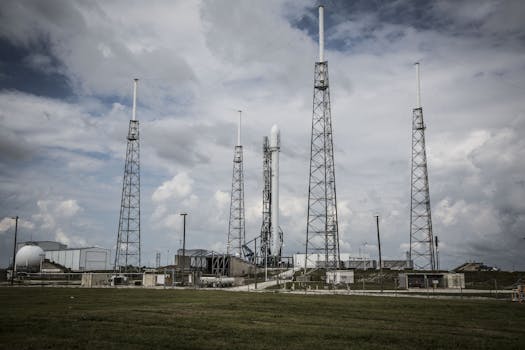Harnessing the Skies: New Technologies Transforming Satellite Communications

Harnessing the Skies: New Technologies Transforming Satellite Communications
Harnessing the Skies: New Technologies Transforming Satellite Communications is a rapidly evolving field that has witnessed significant advancements in recent years. The integration of new technologies such as 5G, artificial intelligence, and the Internet of Things (IoT) is transforming the satellite communications landscape, enabling faster, more reliable, and more efficient communication services.
The satellite communications industry has traditionally been dominated by geostationary satellites, which have been used for a wide range of applications, including television broadcasting, telecommunications, and weather forecasting. However, the advent of new technologies has enabled the development of new satellite systems, such as low-Earth orbit (LEO) satellites and medium-Earth orbit (MEO) satellites, which offer faster and more reliable communication services.
The Rise of LEO Satellites
LEO satellites are a new generation of satellites that operate at an altitude of around 1,200 kilometers, which is much lower than traditional geostationary satellites. This lower altitude enables LEO satellites to provide faster and more reliable communication services, with lower latency and higher throughput. LEO satellites are also less expensive to launch and operate than traditional geostationary satellites, making them an attractive option for a wide range of applications, including satellite broadband, IoT, and Earth observation.
One of the key benefits of LEO satellites is their ability to provide global coverage, including in areas where traditional satellite communications systems may not be available. This makes them an ideal solution for applications such as emergency response, disaster relief, and remote connectivity. LEO satellites are also being used for a wide range of other applications, including satellite imaging, weather forecasting, and space exploration.
The Role of 5G in Satellite Communications
The integration of 5G technology with satellite communications is another significant development in the industry. 5G enables faster and more reliable communication services, with lower latency and higher throughput. This makes it an ideal solution for applications such as satellite broadband, IoT, and mission-critical communications. The use of 5G in satellite communications also enables the development of new services, such as ultra-high definition video streaming and online gaming.
The use of 5G in satellite communications also enables the development of new business models, such as satellite-as-a-service and communications-as-a-service. These models enable organizations to access satellite communications services on a pay-as-you-go basis, without the need for significant upfront investment. This makes satellite communications more accessible and affordable for a wide range of organizations, including small and medium-sized enterprises and startups.
Artificial Intelligence and the Internet of Things
Artificial intelligence (AI) and the Internet of Things (IoT) are also playing a significant role in the transformation of the satellite communications industry. AI enables the development of more efficient and effective satellite communications systems, with improved performance and reduced costs. The use of AI also enables the development of new services, such as predictive maintenance and anomaly detection.
The IoT is also driving the demand for satellite communications services, particularly in areas such as industrial automation, transportation, and logistics. The use of satellite communications enables organizations to connect devices and sensors in remote and hard-to-reach areas, enabling real-time monitoring and control. This makes satellite communications an essential component of the IoT ecosystem, enabling organizations to optimize their operations and improve their decision-making.
Conclusion
In conclusion, the satellite communications industry is undergoing a significant transformation, driven by the advent of new technologies such as LEO satellites, 5G, AI, and the IoT. These technologies are enabling faster, more reliable, and more efficient communication services, with lower latency and higher throughput. They are also enabling the development of new services and business models, making satellite communications more accessible and affordable for a wide range of organizations.
